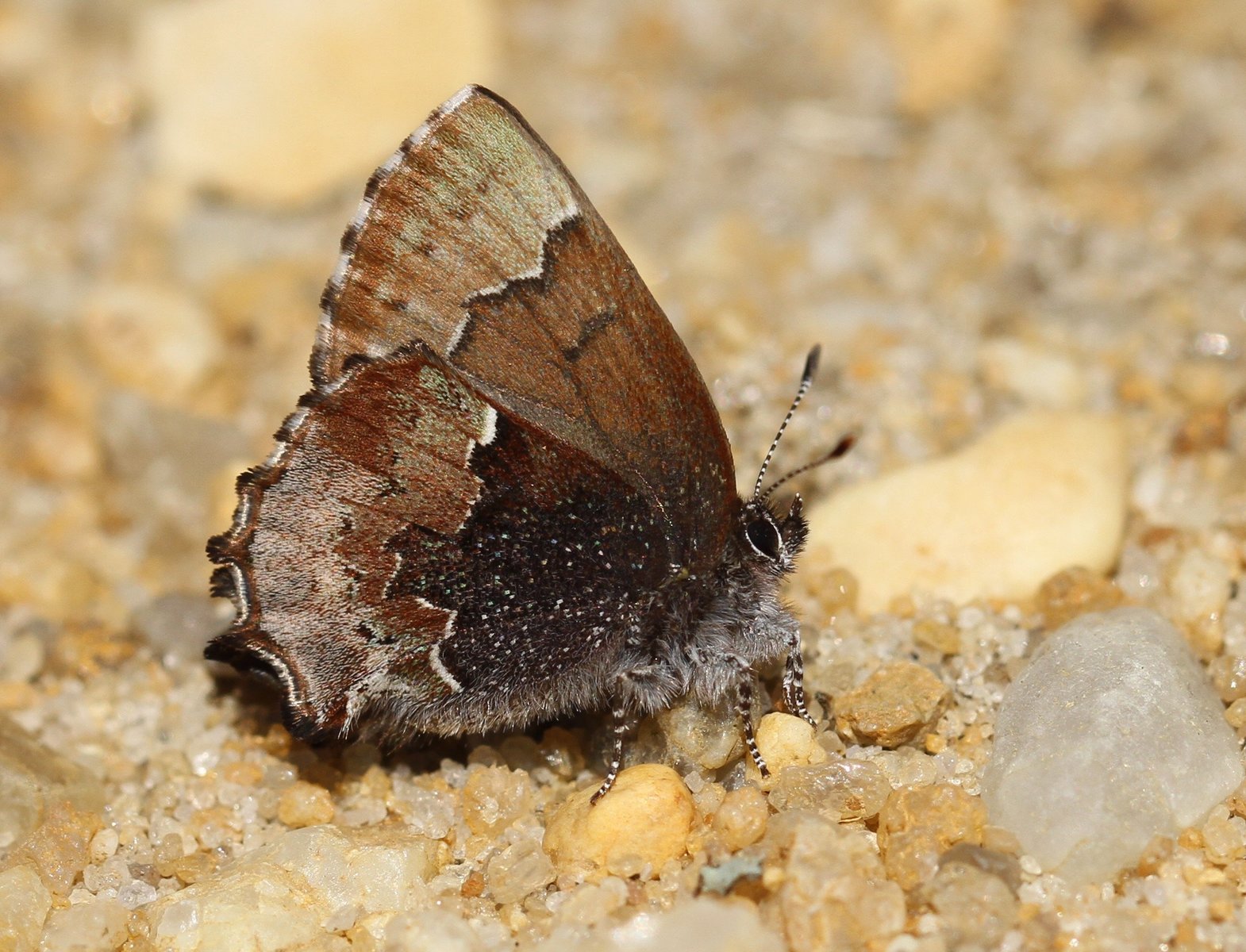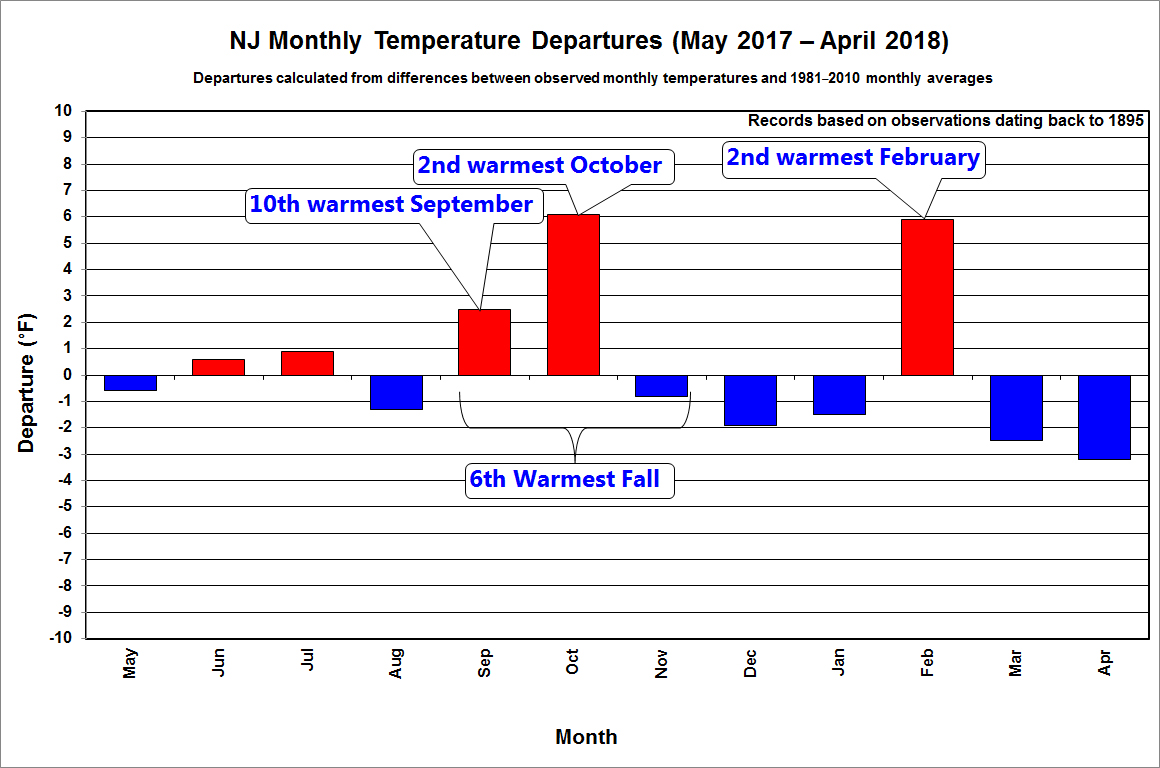
A Henry’s elfin photo’d beautifully by new SJBP participant Ben Barkley at Belleplain SF on April 20. Like most butterflies so far this year, Henry’s emerged later than usual. They are often flying in South Jersey by mid- to late March. Our FOYs this year were not discovered until April 11.
Thanks to Jack Miller and to Michael Gochfeld for their help in assembling this post.
Our South Jersey Butterfly Project log’s numbers so far this year seem good evidence of the simple truth that temperature affects butterfly activity – especially in early spring.
January and March were 1-2 degrees cooler than average state-wide, and April was much cooler than average (more than 3 degrees colder). Despite a very warm February, our SJBF team found far fewer butterflies than we usually do through the first four months of the year.
Our previous least-active spring was in the cool of 2015 when we compiled only 181 reports January through April. In 2018 our total for the four months is a mere 128, by far our fewest for January-April in our eleven years logging. We have twice compiled more than 128 reports in March alone, and we have compiled more than 128 reports in April alone in every one of our previous ten years.
From 2008-2017 we averaged ~86 reports in March (with a high of 272 in March 2012 and a low 0f 18 in March 2015) and we averaged ~243 in April (high of 352 in April 2017; a low of 163 in April 2015).
This year we compiled only 27 reports in March (tying for our 3rd-lowest total of our 11 years) and managed only 91 reports in April, a new record low for the month.
April 2018 was the 30th coldest April in New Jersey since 1895 (and the 13th coldest in the continental US over the same period). Rainfall during the month was also above average in the state.
Jack Miller cataloged the many FOY emergences that were generally late to very late.
Among the latest-ever first dates:
Our first report of Henry’s elfin was on April 11. Previous latest FOY: 4/9/14.
Our first falcate orange-tip flew on April 21. Previous latest FOY: 4/16/15.
Our first eastern tiger swallowtail was found on April 22. Previous latest FOY: 4/19/14.
Our first juniper hairstreak was found on April 26. Previous latest FOY: 4/23/11.
Our first frosted elfin flew on May 1. Previous latest FOY: 4/24/13.
Our first black swallowtail was found on May 2. Previous latest FOY: 4/30/15.
We had other late records and near-late records – and may have more to come as other FOYs finally appear.
One interesting question to contemplate:
Will the flights of single-brooded butterflies (elfins, orange-tips, and others) be shifted or shortened? In other words, will we establish some latest-ever late dates (as species extend their flight beyond the usual dates in response to their delayed starts) or will their flight periods simply be cut short, ending around the generally-expected late dates despite the slowed emergences?
Keep exploring and reporting, everyone!
Jack Connor
You can read NJ Climatologist David Robinson’s analysis of April 2018 here:
Office of New Jersey State Climatologist
Selected comments from his full write-up:
“If you think it has been a long time since New Jersey experienced as chilly an April as this past one, you are correct. With snow accumulating in a storm on the 2nd to snow showers on the 30th, one was hard pressed to find many days when pleasant spring conditions could be found. . . [Overall], it was the persistent chill that captured the most attention, with the green up of lawns and foliage, accompanied by the blossoming of spring flowers, delayed from normal by upwards of two weeks.
“Statewide, the April average temperature of 47.7° was 3.2° below the 1981–2010 mean (2.0° below the 1895–2017 mean). This ranks as the 28th coolest April since 1895 and the chilliest since 1982 (also 47.7°). . .
“April precipitation across NJ averaged 4.20”. This was 0.21” above the 1981–2010 mean (0.48” above the period-of-record mean). This was the 38th wettest April on record.”

